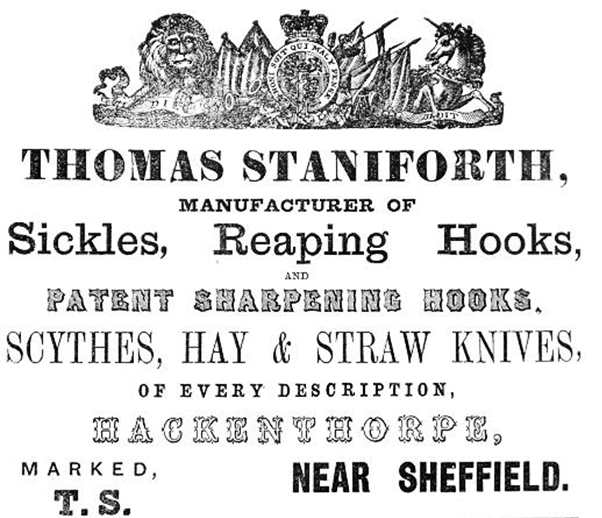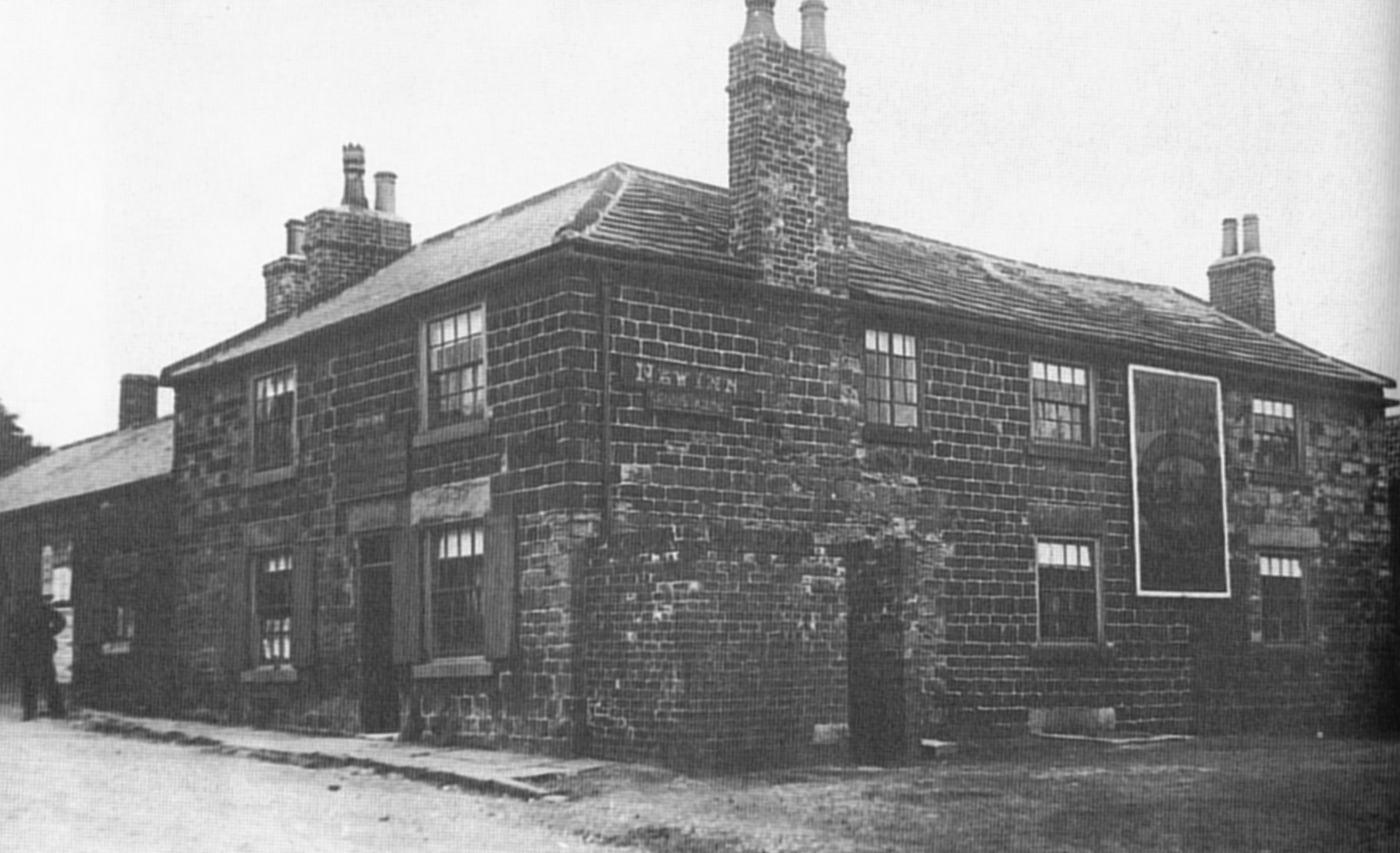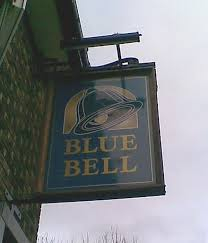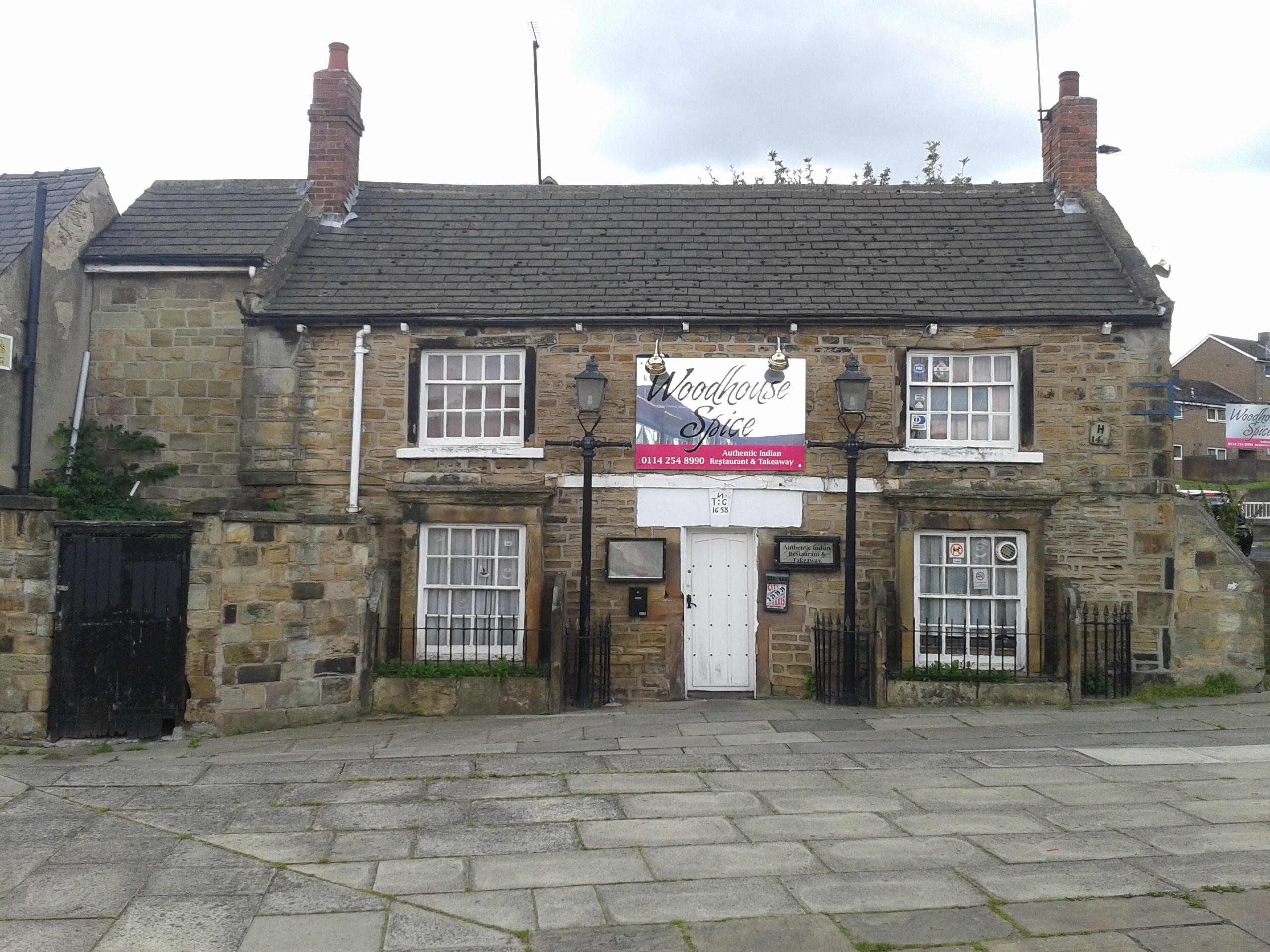
Thomas Staniforth & Co. Sickle works at Hackenthorpe.
 The New Inn
The New Inn
The following article contains an incomplete list of the pubs that have been owned and operated by various members of the Staniforth family over the years, this list will be updated regularly as more information is unearthed:
The New Inn, Hackenthorpe
The New Inn is a fine example of a pub from a bygone era, today the building is occupied by a Vets at the end of Main Street and stands next door to the Post Office on Sheffield Road. Prior to 1910 this building was owned by Thomas Staniforth IV. Thomas; Sickle and Scytheworks stands opposite the building. Outhouses including stables were found next to the main building. Victuallers at The New Inn starting in 1833 include Martha Booth, James Staniforth and his father before him George Staniforth and William and Harry Helliwell. For a number of years the pub was locally known as ‘Betsey’s’ when it was linked to the Hope and Anchor Brewery. The New Inn ran until 1959 when the pub closed and it’s license was transferred to the nearby Golden Plover on July 20th 1959, which can still be found on Spa View Road.
The building was bought by J.F Whittlestone, veterinary surgeon and he changed the name to New Court. Today it is known as Crookes Vets.
We have a full article on the history of The New Inn, which can be read here
The Blue Bell, Hackenthorpe
 The Bluebell
The Bluebell
The Blue Bell which today exists as a convenience store on Main Street was originally a one-roomed beerhouse. The original building was expanded and featured a total of three public rooms. It may be hard to believe, but it wasn’t until 1949 that the building received full licensing. The pubs earlier names were The Shoemakers, and The Boot and Shoe, these names come from the days when John Rowbotham owned the building. John was a shoemaker by trade and then became the landlord in 1868. James Staniforth was running the pub before this, he was the son of George Staniforth and Ann Barker, and they ran the nearby New Inn. Following James Staniforth the pub was ran by Elizabeth Linley, the aforementioned John Rowbotham. He was followed by Sarah Brown, a Mr. Woughingham, Joseph Binner, William Linacre, Thomas Atkin, John Henry Frith and Ernest Barber. In 1955 the building was completely rebuilt, bringing it closer to the road and greatly extending its size. This rebuild was linked to the fact the village was now part of Sheffield City and slum clearances and development was occurring at a rapid rate in the area, the village during the 1950s was drastically altered. In later years the pub was owned by Charringtons Brewers.
The Cross Keys, Handsworth
The Cross Keys was owned by Maria Carnall, daughter of John Carnall and Jane Staniforth. Maria was the sister of Mary Carnall, the wife of John Staniforth, operator of The Cross Daggers and The George at Woodhouse, and The Wellington at Darnall. Maria’s husband was James Warburton, and they had a daughter Jane Warburton who wrote about making trips to her aunt and uncle at The Wellington Inn, whilst also working at The Cross Keys, Handsworth. On the 1891 Census, Maria is running The Cross Keys as a widower, with her son John Warburton lending a helping hand.
The Cross Daggers, Woodhouse
In Walks in the Neighbourhood of Sheffield published in 1831, the author John Thomas who was on his way from Sheffield to Laughton-en-le-Morthen writes:
Woodhouse is entered by its market place. There is nothing in this place to delay the pedestrian, but grateful experience reminds me to hint to him, if the sun have burned, or the wind and dust parched him, that here, at the house of the notable Mary Staniforth, ale and eggs, courtesy and cleanliness may be found in excellence and abundance.
This was Mary Hurt, the wife of John Staniforth, and the daughter of Joseph Hurt and Ann Rowbotham from Hackenthorpe. John passed away in 1813, however Mary lived till 1849, and was the landlady at The Cross Daggers. This pub had faced, and still continues to do so (Although it now operates as a restaurant), the market square and has done so for centuries. Although it is not quite clear when Mary began operating the Cross Daggers, it seems likely that she was there for quite some time as she would not have become notable overnight.
 The Cross Daggers
The Cross Daggers
At some point prior to her death, Mary handed the control of The Cross Daggers to her son John Staniforth, and his wife Mary Carnall. Mary was the daughter of John Carnall and Jane Staniforth, and would have been a cousin of her husbands from a few generations back. Mary was said to have been very proud of her Staniforth roots, and was known to declare it to people she met. It was recorded that John and Mary operated the business successfully ‘The business of which they conducted, prosperously’ for twenty two years, whilst also raising a family of two sons and three daughters. John and Mary moved to the nearby George Inn, in 1854.
The Black Swan, Little Pond Street
Luke Staniforth, born 1780 is recorded as running The Black Swan in the 1820s. On the Baine’s Directory of 1822, and the White’s Directory of 1833, his son John Staniforth is recorded as ‘Vict Black Swan’ 15 Little Pond Street. John continued to run the establishment for decades, again being recorded as ‘Vict Black Swan’ on the 1841 Piggot’s Directory. John passes away in 1855, and by 1856, John Slingsby is the owner.
The George, Woodhouse
The George was operated by John Staniforth and his wife Mary Carnall, when they relocated from The Cross Daggers in 1854, following the death of Johns mother Mary Staniforth (nee Hurt). The couple bought The George for £620. In 1861 John noticed the ongoing developments in the neighbouring village of Darnall, and he sold The George for £800 and relocated to The Wellington Inn.
The Wellington Inn, Darnall
The Wellington was operated by John Staniforth and his wife Mary Carnall, they relocated from The George, Woodhouse in 1861. He purchased this pub from William Hardcastle, whose father had ran the pub prior for a number of years. The Staniforth family remained in The Wellignton until John’s death in 1870. Mary continued to operate the pub before finally retiring in 1901 at the age of 89. She moved to Attercliffe and passed away in 1905.
The Angel, Woodhouse
The Angels Inn stands at 59 Sheffield Road, Woodhouse. The pub was ran by William Staniforth, and his wife Elizabeth Widdison, as evidenced by the 1881 Census. Elizabeth continued to operate the pub following her husband’s death in 1877, however by the time of the 1901 Census she had retired and relocated.
The Fitzwilliam Arms, Eckington
In George Foster's 1886 book Reminiscences of Mosborough, he notes 'The Fitzwilliam Arms, by Thomas Staniforth, his wife a big, stout Irishwoman.' In 1826, this same pub was occupied by George Staniforth, with his widow carrying on following his death. Today the building is long gone, and private housing stand on the site.